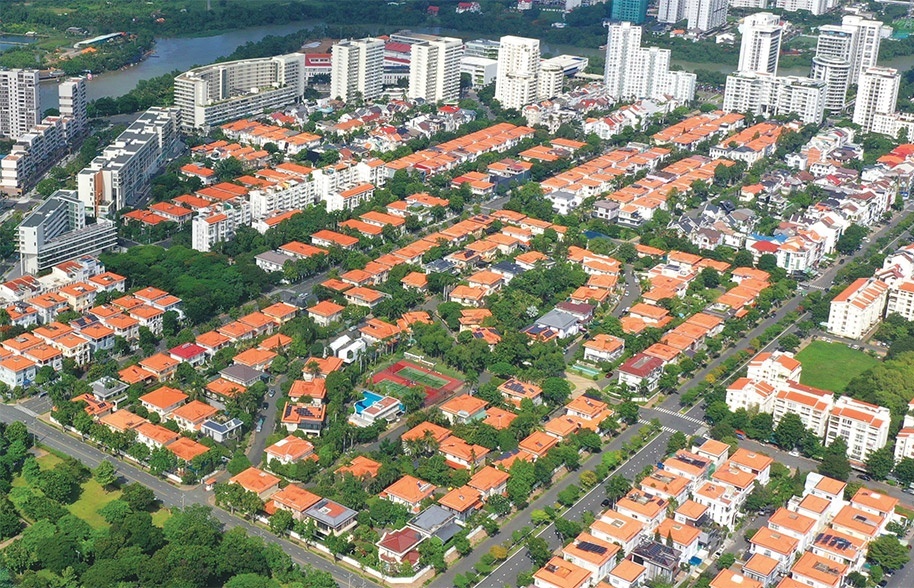Low VAT rates in Vietnam benefit the rich more than the poor: WB
 |
Moving forward with tax reforms is important for Vietnam to ensure sustainable growth and macroeconomic stability.
Vietnam’s tax-to-GDP ratio has fallen over recent years, from 23.5% of GDP in 2010 to 19.1% of GDP in 2015.
This is mainly because of three factors. First, oil related revenue has declined. Second, trade related revenue has declined because of commitment to lower import tariffs under various trade agreements. And finally, the corporate income tax (CIT) rate was cut successively from 32 to now 20%.
These changes have stimulated investment, growth and job creation, but they have also contributed to a growing fiscal deficit and public debt.
Reducing the fiscal deficit will require a comprehensive and balanced mix of policies focusing both on making spending more efficient and on mobilizing adequate revenue.
There is room for cutting wasteful spending and this needs to be done.
But at the same time, Vietnam faces significant investment needs in infrastructure, health and education. Therefore, steps are needed to boost domestic revenue through tax reforms.
At the same time, the tax burden needs be shared fairly and the tax environment also needs to support growth and investment.
The proposed revisions of the five laws represent a comprehensive reform package with clear policy options that should be considered carefully in this regard.
The package would simplify the personal income tax (PIT) rate structure and make it more progressive. It would also increase taxes on natural resources which will generate some revenue but also have environmental benefits. Finally, it is shifting to more of the tax burden to consumption taxes, including VAT which tends to be a very efficient tax that is conducive to growth.
While we can of course discuss specific details, our overall assessment is that many of the proposed measures would help achieve the government’s objective of stabilizing revenue mobilization while keeping an equitable burden sharing and growth friendly tax environment.
VAT less distortive than income tax
When it comes to the proposed changes to VAT, there are strong arguments to consider VAT as part of the overall tax reform and restructuring.
There is a lot of research that has shown that VAT is better for economic growth than income taxes on labor and capital. VAT has a less distortive impact on the economic decisions of households and businesses than taxes on labor and capital. It also supports international competitiveness. It taxes domestic consumption, including imports while exports are not subject to VAT.
On the other hand, income taxes, whether on labor or capital, put the tax burden on domestic production while imports are not subject to income taxes.
Not surprisingly, we are seeing that many countries have shifted their tax structure to rely more on VAT. It is now the consumption tax of every OECD country except the U.S. It is also the general consumption tax of all the larger countries outside OECD, including India which has adopted it from July 1 of this year.
Vietnam still has potential to expand the use of VAT
If we look at the revenue contribution of VAT, the current contribution of the taxes on goods and services in Vietnam in 2016 is about 48.5 percent of the total tax revenue.
In the ASEAN region, this ratio is lower than Thailand (53.9%), Laos (55.9%), Cambodia (55.5%), but slightly higher than the Philippines (45.6 percent).
The current VAT rate is at the lower end compared to what we see globally. The average VAT rate globally is 16% but of course with a lot of variation.
Among Asian countries, Indonesia, Cambodia and Thailand have VAT rates of 10%, Philippines has 12, Sri Lanka 12.5, Mongolia 13, Bangladesh 15 and China 17.
So the proposed increase in the VAT rate here in Vietnam is in line with international practice.
Impact on the poor
Now, there are legitimate concerns about the distributional impact of VAT and especially the impact on the poor.
Unlike progressive income taxes, the VAT does not differentiate. All households pay the same VAT rate, regardless of their income level. VAT therefore tends to be more regressive.
But keeping a low VAT rate is not necessarily the best way to address fiscal equity and fairness.
First, because richer households tend to consume more and more expensive goods, they pay most of the VAT. Here in Vietnam, our estimates suggest the 20% poorest households only account for about 9% of the total VAT revenue. In contrast, the 20% richest households pay close to 40% of the total VAT.
This means that if a poor household saves on average VND10,000 (US$0.44) because of a lower VAT rate, a rich household saves VND40,000. So low VAT rates do actually benefit the rich more than the poor.
Second, the major concern is that poorer households spend a higher share of their income on current consumption and especially on essential goods, such as food.
But there are ways to address it. One option to reduce the negative impact on the poor is to keep the reduced VAT rate for essential goods unchanged. This would reduce the impact on the poor and would be consistent with the general direction of the proposed reforms.
We are undertaking an assessment, jointly with the Ministry of Finance, to understand the distributional impact of the proposed reforms and to also inform further refinements of the proposed reforms.
Finally, any debate on distributional issues needs to focus on the entire tax and benefit system, and not just on one tax in isolation.
The question is whether a low VAT rate is the best way to achieve the intended objective of having a fair and equitable fiscal system. Again, I would argue it is better to use more targeted ways to support the poor.
On the revenue side, the proposal already includes other tax reforms that would create a more progressive and fair tax system. For example, the PIT reforms.
It is also important to move forward with the introduction of property taxes which tend to be progressive.
Finally, we would also recommend to close loopholes and exemptions in the corporate income tax to ensure the corporate sector contributes, especially now that Vietnam has a very competitive CIT rate.
In addition, there are often better ways to provide targeted redistribution to poor households on the expenditure side, including by spending on health and education and infrastructure that benefits the poor.
So if we look at the VAT proposal in this broader context, we think it is possible to address the valid concerns about the distributional impact.
*Sebastian Eckardt is the World Bank’s lead economist for Vietnam where he coordinates the bank’s work on macroeconomics, trade, finance, agriculture, poverty and public sector reforms. The views expressed here are his own.
What the stars mean:
★ Poor ★ ★ Promising ★★★ Good ★★★★ Very good ★★★★★ Exceptional
Latest News
More News
- F88 partners with MB to transform over 850 financial stores into bank offices (December 17, 2024 | 18:04)
- Obstacles to stock-market upgrade to be removed (December 17, 2024 | 11:29)
- Vietnam seizes opportunities amid global trade shifts (December 16, 2024 | 18:00)
- Long-term perspective remains optimal approach (December 16, 2024 | 14:26)
- Fiscal measures to be based on upcoming US status (December 16, 2024 | 10:09)
- PetroVietnam accelerates divestment from PVI (December 16, 2024 | 06:59)
- Techcombank proactive with ESG and sustainability (December 14, 2024 | 10:00)
- VAT cut set to continue on through to summer (December 14, 2024 | 09:00)
- BIWASE Long An issues Vietnam's first AAA-rated bonds worth $27.6 million (December 13, 2024 | 20:22)
- Citi hosts Vietnam Day for Hong Kong clients (December 13, 2024 | 14:21)


















 Mobile Version
Mobile Version